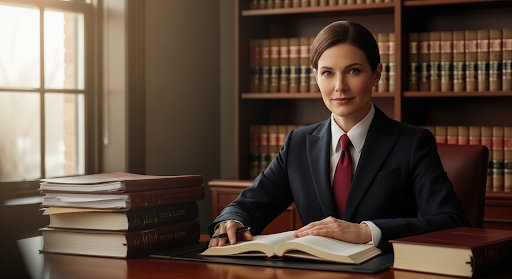A courtroom decision can feel like the finish line. The judge speaks, the gavel drops, and many people assume the case is permanently closed.
In reality, a verdict often marks the beginning of another phase that is just as important.
Appeals exist for a reason, and understanding what happens after a trial can make the difference between accepting an outcome and exploring the options the justice system still allows.
Why the First Outcome Isn’t Always the Final Word
Trials involve witnesses, evidence, legal instructions, and strategic decisions made in real time. Even with careful preparation, mistakes can occur.
An appeal does not retry the case or bring new evidence. Instead, it examines whether the law was applied correctly and whether the verdict was reached through a fair process.
Many clients learn too late that the window to act is shorter than expected.
In most situations, the timeline to file a notice of appeal begins immediately after sentencing or judgment. Waiting for emotions to settle can unintentionally close the door on a legal path that still exists.
Common Misunderstandings After a Verdict
- Believing an appeal is only for serious errors
- Assuming the original attorney automatically handles the next steps
- Thinking that new evidence can be introduced on appeal
- Waiting until dissatisfaction turns into regret
Recognizing these misconceptions early can prevent missed opportunities.
The Critical First Steps Clients Often Overlook
Once the verdict is entered, the clock starts ticking.
The rules vary depending on the type of case and jurisdiction, but the deadlines are strict. This is one of the reasons many clients consult an appellate attorney in Chicago who focuses on post-trial procedure and written advocacy.
Filing the Notice of Appeal
The notice is a brief document, but it is a mandatory trigger for the appellate process. Missing this filing usually ends the chance to appeal, regardless of the strength of any legal arguments.
Preserving the Trial Record
Appeals are based entirely on what happened in the original courtroom. The record includes transcripts, motions, exhibits, and rulings.
If something was not documented, it typically cannot be argued later. This is why requesting transcripts promptly and ensuring all materials are collected is essential.
Identifying Appealable Issues
Not every unfavorable ruling leads to a viable appeal. The strongest appellate arguments often involve:
- Incorrect jury instructions
- Evidence admitted or excluded improperly
- Constitutional concerns
- Procedural errors affecting the outcome
A detailed review from an appellate lawyer in Chicago can help determine whether advancing the case is worthwhile.
Understanding What an Appeal Can and Cannot Do
Appeals are frequently misunderstood. Some clients expect a second trial, while others hope for new testimony or a different strategy than the one used originally. Clarifying what the process involves helps set realistic expectations.
What an Appeal Can Achieve
- Reverse or modify a judgment
- Order a new trial
- Correct legal errors
- Clarify how a law should be interpreted
Appeals can influence broader legal standards and are often the reason certain protections exist today.
What an Appeal Cannot Accomplish
- Revisit facts already decided by the jury
- Introduce new witnesses or evidence
- Challenge the case based on dissatisfaction alone
An appeal succeeds only when there is a legal basis supported by the record.
Why Strategy Matters Before and After a Verdict
Clients often focus on winning at trial, not realizing that decisions made earlier can affect the ability to appeal later.
Preserving objections and ensuring issues are raised on the record are key responsibilities during the trial itself.
When these steps are missed, appellate options become limited.
Working with Trial and Appellate Teams
Some cases benefit from collaboration between trial counsel and a post-trial specialist. While trial lawyers excel in the courtroom, appellate practitioners focus on research, brief writing, and legal analysis. This combination can help maintain a strong position no matter how the case progresses.
When Exploring an Appeal Makes Sense
Not every verdict warrants further action, but there are situations where a second look is valuable.
Situations Where Clients Often Pursue Appeals
- The ruling conflicts with established law
- Key objections were dismissed without explanation
- A significant penalty appears out of proportion
- New legal developments may affect the outcome
Even when a reversal is unlikely, understanding the available options helps clients make informed decisions rather than reacting out of urgency.
Final Thoughts
A verdict may feel like the end, but it is often only one chapter in the legal process. The appeal system exists to protect fairness, correct errors, and ensure that the law is applied consistently.
Acting early, understanding the timeline, and knowing what an appeal can realistically accomplish are crucial steps many clients overlook.
When the gavel falls, the path forward is not always obvious. Learning what happens next can prevent missed opportunities and provide clarity during a challenging moment.
